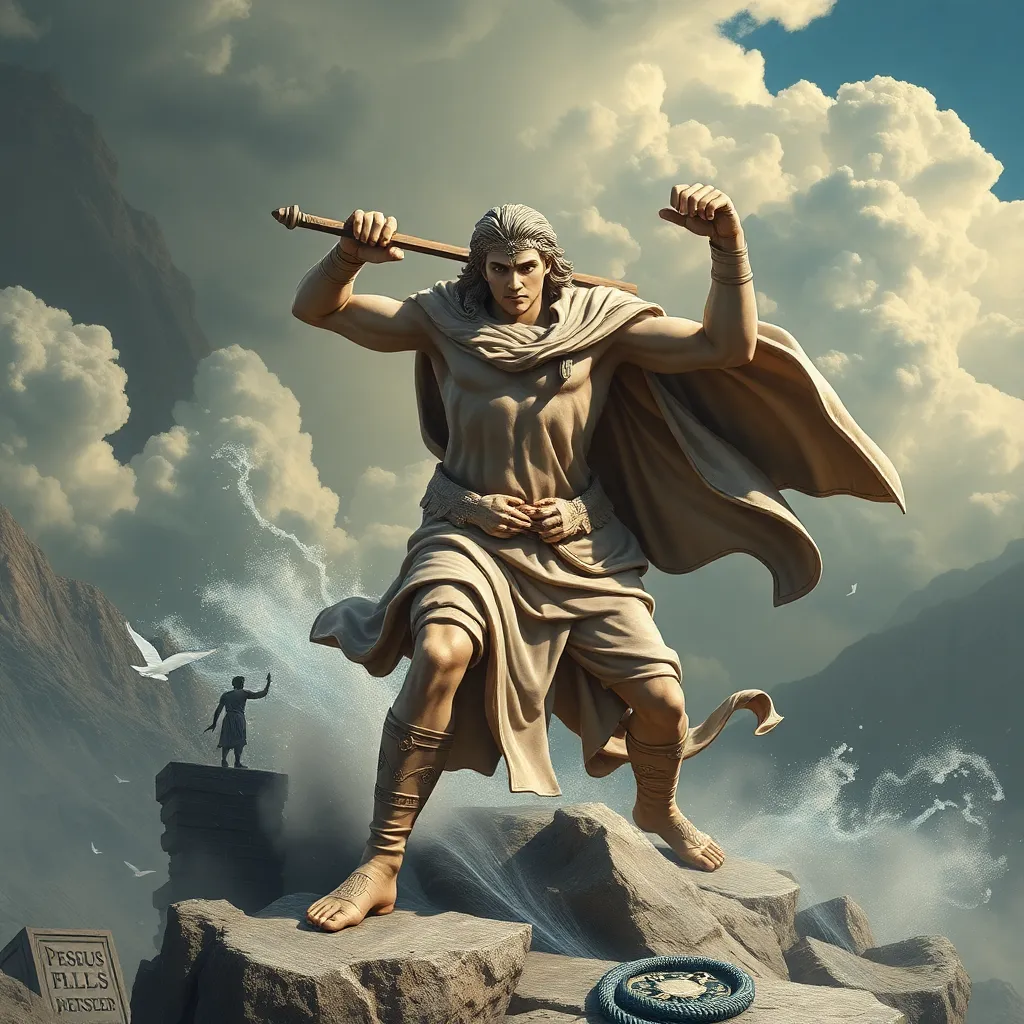The Trials and Tribulations of Perseus: A Hero’s Struggles
I. Introduction
Perseus is one of the most celebrated heroes in Greek mythology, known for his daring exploits and remarkable feats. As the son of Zeus and Danaë, his story is not only one of adventure but also of deep personal struggle against fate and the forces of evil. The myths surrounding Perseus are integral to the larger tapestry of Greek mythology, illustrating themes of heroism, destiny, and divine intervention.
This article explores the numerous challenges that Perseus faced throughout his life, examining how these trials shaped his character and solidified his legacy as one of the greatest heroes of ancient Greece.
II. The Prophecy and Its Impact
The narrative of Perseus begins with a prophecy delivered by the Oracle of Delphi, foretelling that Danaë’s son would kill his grandfather, Acrisius, the king of Argos. This ominous prediction set the stage for a series of events that would deeply affect Perseus’s life.
- A. The Oracle’s foretelling and its consequences: To prevent the prophecy from coming true, Acrisius imprisoned Danaë, but Zeus’s divine intervention led to Perseus’s birth.
- B. The significance of fate in Perseus’s journey: The inescapable nature of fate loomed large over Perseus, shaping his actions and decisions throughout his life.
- C. How the prophecy sets the stage for his trials: The prophecy not only defined his beginnings but also motivated his heroic quest to confront the challenges ahead.
III. The Quest for Medusa’s Head
One of Perseus’s most famous challenges was his quest to slay Medusa, the Gorgon whose gaze could turn anyone to stone. This daunting task was not only a test of strength but also of cunning and valor.
- A. The challenge of slaying Medusa: Armed with nothing but a shield and a sword, Perseus faced the monstrous Medusa, whose hideous appearance was matched only by her deadly powers.
- B. The role of divine assistance from Athena and Hermes: Perseus received crucial help from the goddess Athena, who provided him with a reflective shield, and Hermes, who gifted him winged sandals for flight.
- C. Perseus’s ingenuity and bravery in overcoming obstacles: Utilizing his gifts wisely, Perseus approached Medusa with caution, ultimately beheading her without looking directly at her.
IV. The Journey to the Underworld
Perseus’s adventures did not end with Medusa. He embarked on a perilous journey to the Underworld, where he faced the ultimate test of courage and resolve.
- A. The significance of traveling to the realm of the dead: This journey represented a confrontation with death, a theme central to many heroic narratives.
- B. Encounters with mythical beings and tests of character: Perseus encountered various figures in the Underworld, each presenting unique challenges that tested his bravery and wits.
- C. Lessons learned from facing death and darkness: His experiences in the Underworld forced him to confront his own mortality and the nature of heroism.
V. The Rescue of Andromeda
In a twist of fate, Perseus encountered Andromeda, a princess sacrificed to a sea monster. His heroic rescue showcased not only his bravery but also the theme of love intertwined with heroism.
- A. The circumstances leading to Andromeda’s peril: Cursed by her mother’s vanity, Andromeda was chained to a rock as an offering to a monster.
- B. Perseus’s heroic actions and the theme of love: After slaying the monster, Perseus freed Andromeda, solidifying their bond and showcasing the romantic aspect of his heroism.
- C. The duality of heroism and personal sacrifice: Perseus’s victory was not without cost, as he had to confront his own desires and responsibilities as a hero.
VI. Confrontation with King Polydectes
Upon returning to his homeland, Perseus faced another formidable challenge in the form of King Polydectes, who sought to claim Danaë for himself. This conflict was rooted in both political ambition and personal vendetta.
- A. The political and personal motivations behind the conflict: Polydectes’s desire to marry Danaë pushed him to eliminate Perseus, viewing him as a threat.
- B. The strategy and courage required to confront the king: Perseus devised a clever plan, using Medusa’s head to turn Polydectes and his followers to stone.
- C. The resolution of Perseus’s struggle against tyranny: By defeating Polydectes, Perseus restored order and justice to his kingdom.
VII. Legacy and Transformation
Perseus’s trials and tribulations played a crucial role in shaping his identity as a hero. His journey was marked by growth, resilience, and a profound understanding of heroism.
- A. How Perseus’s trials shaped his identity as a hero: Each challenge he faced contributed to his development, transforming him from a mere mortal into a legendary figure.
- B. The impact of his story on subsequent myths and cultural narratives: The tales of Perseus inspired later generations, influencing countless stories of heroism in literature and art.
- C. The lasting lessons of resilience and courage: Perseus’s adventures serve as timeless reminders of the strength of the human spirit in overcoming adversity.
VIII. Conclusion
In conclusion, Perseus’s trials and tribulations are significant not only for their narrative depth but also for their reflection of the complexities of heroism. His story illustrates the interplay between fate and free will, showcasing how challenges can shape character and legacy.
Heroism, as depicted in mythology, offers valuable lessons relevant to our lives today. Perseus’s legacy of courage, ingenuity, and resilience continues to resonate, reminding us of the hero within each of us and the struggles we must face to achieve greatness.




